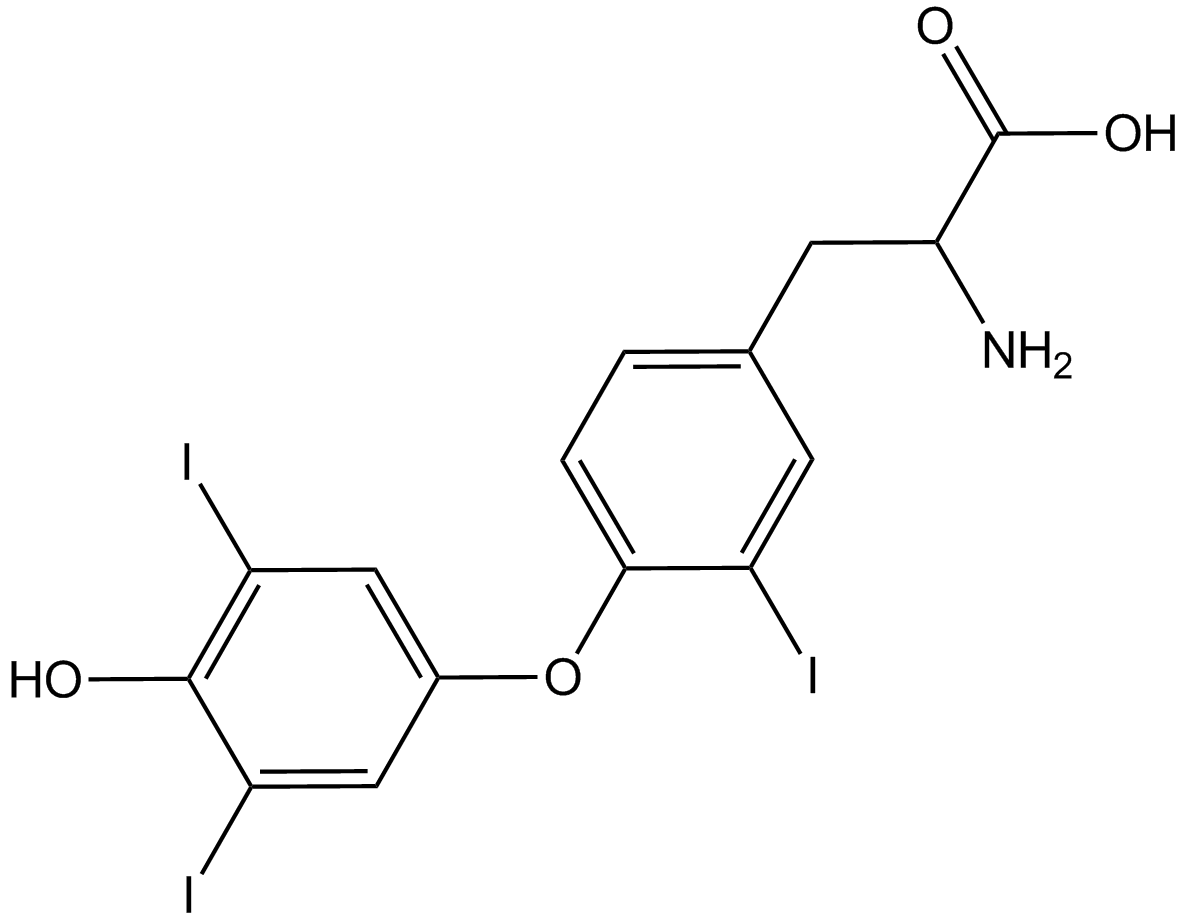3,3',5'-Triiodo-L-thyronine (Synonyms: Reverse T3,rT3,3,3’,5’-T3) |
| Catalog No.GC10384 |
3,3',5'-Triiodo-L-thyronine is a thyroid hormone generated by deiodination of the prohormone thyroxine.
Products are for research use only. Not for human use. We do not sell to patients.

Cas No.: 5817-39-0
Sample solution is provided at 25 µL, 10mM.
3,3',5'-triiodo-L-thyronine (reverse T3 or rT3) and 3,5,3'-triiodo-L-thyronine (T3) are the metabolism of thyroxine (T4) [1]. 3,3',5'-Triiodo-L-thyronine is thyroid hormone receptors TRα and TRβ antagonist [1].
Thyroid hormones play important roles in the development of the mammalian brain by acting on migration and differentiation of neural cells, synaptogenesis, and myelination. The actions of thyroid hormones are mediated by nuclear thyroid hormone receptors (TRs) and regulation of gene expression. TRs have been also involved in adult brain function. In adult mice, TRα1 deletion and a dominant negative mutant receptor expression induce consistent behavioral changes leading to severe anxiety and morphological changes in the hippocampus [2].
The rT3 was about 1,000-fold less active at the thyroid hormone receptors TRα and TRβ compared with 3,3',5-triiodo-L-thyronine and commonly described as inactive [1].It has been reported that rT3 activates a native form of TRα, TRΔα1, which lacks a nuclear localization signal and functions in the cytoplasm. Through this action, rT3 initiates actin polymerization, particularly in astrocytes and neurons [3].
References:
[1] Nicod P, Burger A, Staeheli V, et al. A radioimmunoassay for 3, 3′, 5′-triiodo-L-thyronine in unextracted serum: method and clinical results[J]. The Journal of Clinical Endocrinology & Metabolism, 1976, 42(5): 823-829.
[2] Bernal J. Thyroid hormone receptors in brain development and function[J]. Nature clinical practice Endocrinology & metabolism, 2007, 3(3): 249-259.
[3] Senese R, Cioffi F, De Lange P, et al. Thyroid: biological actions of ‘nonclassical’thyroid hormones[J]. Journal of Endocrinology, 2014, 221(2): R1-R12.
Average Rating: 5 (Based on Reviews and 20 reference(s) in Google Scholar.)
GLPBIO products are for RESEARCH USE ONLY. Please make sure your review or question is research based.
Required fields are marked with *




















